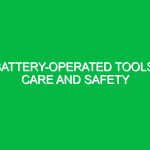Introduction to Hazard Communication
Hazard Communication (HazCom) is a crucial aspect of workplace safety that focuses on ensuring that employees are aware of the hazards associated with chemicals they may encounter on the job. This communication is vital in the Health, Safety, and Environment (HSE) domain, where understanding potential risks can significantly reduce accidents and injuries. As a former safety officer in a manufacturing plant, I witnessed firsthand the consequences of inadequate hazard communication. An incident involving a chemical spill occurred because the workers were not properly informed about the potential dangers of the substance they were handling. This experience underscored the importance of effective communication about hazards.
At its core, Hazard Communication aims to inform and educate employees about chemical hazards through proper labeling, Safety Data Sheets (SDS), and training programs. It creates a culture of safety, enabling workers to recognize and manage risks associated with hazardous materials. In a world where chemicals are ubiquitous in various industries, from construction to healthcare, understanding HazCom is not just beneficial; it is essential.
Identifying Hazards and Risks in Hazard Communication
When discussing Hazard Communication, it is important to identify the various hazards that can arise in the workplace. These can be classified into several categories:
Chemical Hazards
Chemical hazards are substances that can cause harm through exposure. This includes both acute hazards, such as toxic gases, and chronic hazards, like carcinogens. For instance, during my time at a chemical manufacturing facility, we dealt with numerous chemicals classified as hazardous. Each required specific handling procedures to mitigate risks. Employees had to be informed of the potential dangers, such as inhalation risks or skin contact, to ensure their safety.
Physical Hazards
Physical hazards include conditions that may lead to accidents or injuries, such as machinery, noise, or heat. In one case, a colleague suffered severe injuries from equipment malfunction due to lack of proper maintenance and communication about safety protocols. Recognizing these physical risks is just as important as understanding chemical hazards.
Ergonomic Hazards
Ergonomic hazards arise from workplace design and practices that may lead to musculoskeletal disorders. For example, improper lifting techniques can cause back injuries. Hazard Communication in this context involves educating employees on safe lifting practices and ergonomic tools that can reduce risk.
Biological Hazards
Biological hazards involve exposure to harmful microorganisms, such as bacteria and viruses. In healthcare settings, for instance, nurses and doctors must be aware of the risks associated with handling contaminated materials. Effective communication about these hazards, including the use of personal protective equipment (PPE) and proper disposal methods, is critical.
Safety Precautions and Best Practices in Hazard Communication
Understanding potential hazards is just the first step. Implementing safety precautions is essential for effective Hazard Communication. Here are some best practices:
Labeling
Clear labeling of hazardous materials is a fundamental aspect of Hazard Communication. Labels should include the name of the substance, hazard symbols, and precautionary statements. During a training session I facilitated, I emphasized the importance of reading labels before using any chemical. This practice not only protects employees but also fosters a culture of safety awareness.
Safety Data Sheets (SDS)
Safety Data Sheets provide detailed information about specific hazardous substances. They include data on handling, storage, and emergency measures. It is critical that employees know how to access and interpret SDS. In my experience, regular training sessions on SDS were invaluable in ensuring that everyone understood the content and could respond appropriately in emergencies.
Training Programs
Comprehensive training programs are vital for effective Hazard Communication. These programs should cover topics such as hazard recognition, safe handling practices, and emergency response procedures. I recall a particularly effective workshop where real-life scenarios were used to illustrate the importance of following safety protocols. This interactive approach engaged employees and reinforced the learning experience.
Personal Protective Equipment (PPE)
Providing appropriate PPE is essential in protecting employees from chemical and physical hazards. Employers must ensure that workers are trained in the correct use and maintenance of PPE. In one instance, I observed a group of workers improperly using respirators due to a lack of training. This highlighted the need for ongoing education and reinforcement of safety practices.
Regulations and Standards Governing Hazard Communication
Several regulations and standards govern Hazard Communication, ensuring that organizations maintain a safe workplace. The Occupational Safety and Health Administration (OSHA) has established the Hazard Communication Standard (HCS), which sets forth requirements for hazard classification, labeling, and the provision of Safety Data Sheets. Compliance with HCS is not just a legal obligation; it is a moral responsibility to protect employees.
Additionally, the Globally Harmonized System (GHS) provides a standardized approach to hazard communication internationally. By adopting GHS, organizations can ensure that their hazard communication practices align with global standards, facilitating safer workplaces worldwide.
The Role of Leadership in Hazard Communication
Effective Hazard Communication is not solely the responsibility of safety officers or employees; it requires strong leadership commitment. Leaders must prioritize safety and foster an environment where open communication about hazards is encouraged. In my previous role, I saw how a supportive management team could positively impact the safety culture. Regular safety meetings, open-door policies for discussing safety concerns, and recognition of safe practices all contributed to a proactive approach towards hazard communication.
Real-Life Applications of Hazard Communication
To further illustrate the importance of Hazard Communication, consider a case study from the construction industry. A construction company implemented a comprehensive hazard communication program that included detailed training and clear labeling of materials. As a result, the number of incidents related to chemical exposure decreased significantly. Workers became more aware of the risks associated with their tasks and felt empowered to speak up about safety concerns.
Another example comes from the healthcare sector, where effective Hazard Communication can save lives. A hospital that integrated Hazard Communication training into its onboarding process reported fewer incidents of needle-stick injuries. By educating staff on the proper handling and disposal of sharps, the hospital created a safer environment for both employees and patients.
Conclusion: The Importance of Effective Hazard Communication
In conclusion, Hazard Communication is a vital component of workplace safety in the HSE domain. By identifying potential hazards, implementing safety precautions, and adhering to regulations, organizations can significantly reduce risks and protect their employees. As I have learned throughout my career, effective communication about hazards not only saves lives but also fosters a culture of safety that benefits everyone involved.
Engaging in continuous training, providing clear information, and ensuring leadership commitment are critical steps in enhancing Hazard Communication. Ultimately, prioritizing safety and open dialogue about hazards leads to a healthier, safer workplace for all. Whether you’re an employee, a safety officer, or a manager, understanding and implementing effective Hazard Communication practices is a responsibility we all share.


